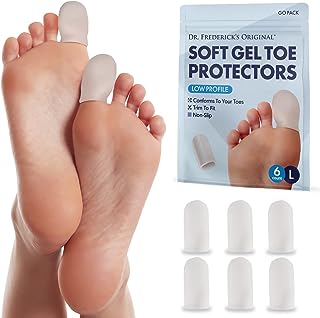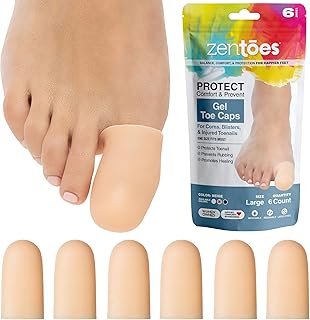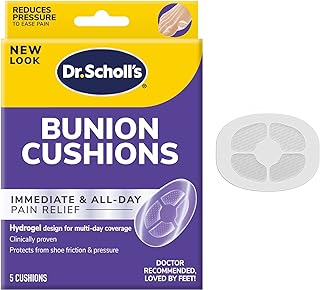5 important factors worth considering when looking for the best toe protector for pointe shoes
In ballet, finding the right toe protectors for pointe shoes is crucial for improving performance and protecting feet. Dancers have many options to choose from, so considering important factors is essential. Toe protectors are more than just a practical accessory – they are connected to the grace, precision, and skill that make ballet so special.
See our guide to the best toe protector for pointe shoes.
Material
When thinking about what material to use for protecting your toes in pointe shoes, it’s important to focus on comfort and how well it works. Silicone might seem like a good option because it’s flexible and lasts a long time, but it can get hot and uncomfortable during long dance sessions. Fabric protectors, on the other hand, are softer and allow for better airflow, making them more comfortable for dancing on your toes. They also can be customized to fit your toes better, giving you more support and protection.
Choosing the right toe protector is a personal decision based on what you need and like. You might want to look for a hybrid design that combines the durability of silicone with the breathability of fabric to get the best of both worlds. It’s important to prioritize the health of your feet during intense dance practices when making your choice. This will help you make a smart decision that keeps your toes safe and improves your ballet performance and enjoyment.
Thickness
When you’re looking to buy a toe protector for your pointe shoes, it’s important to consider the padding thickness. Some people prefer thin protectors for better sensitivity, but choosing thicker padding can provide extra cushioning and support to prevent injuries. Think of it as a protective barrier that not only shields your toes but also improves your dancing experience. By finding the right balance of thickness, you can dance comfortably and confidently.
While adjusting to a thicker toe protector may take some time, the benefits are worth it. The added thickness can absorb shock, reducing strain on your toes and joints during rehearsals or performances. Additionally, a thicker protector can help prevent friction and blisters, allowing you to focus on your technique without foot pain. Prioritizing thickness in your toe protectors shows that you care about your dance career and the health of your feet. So, next time you choose a toe protector, consider going a bit thicker to give your toes the support they need.
Comfort
When buying a toe protector for pointe shoes, it’s important to think about comfort. Dancers who spend a lot of time on their feet need to make sure their toes are well cushioned and protected. Choosing a toe protector that is soft and durable can really help improve your performance and keep your feet healthy. You should pick a toe protector that fits well without causing any discomfort or limiting your movement. You don’t want it to be a distraction when you’re dancing.
While a high-quality toe protector might cost more upfront, the long-term benefits are worth it. Your feet are crucial as a dancer, so it’s essential to take care of them. Prioritizing comfort when choosing a toe protector will not only make your dancing better but also help prevent injuries and keep you dancing for a long time. A happy dancer is one who can move freely and confidently without discomfort, and the right toe protector can help you do that.
Breathability
When choosing a toe protector for pointe shoes, it is important to prioritize breathability. Dancers want to avoid feeling trapped in their shoes, which can affect their performance. A toe protector that allows for airflow not only makes dancing more comfortable but also keeps feet healthy by preventing moisture build-up and skin irritations. Breathable toe protectors help dancers focus on their routines without distractions.
In addition, selecting a breathable toe protector shows a commitment to taking care of dance shoes for the long term. Good ventilation can prevent pointe shoes from wearing out too soon from excess moisture, saving dancers money in the end. By insisting on breathability when picking a toe protector, dancers can improve their performance, feel more comfortable, and keep their pointe shoes in better condition for longer.
Durability
When thinking about a toe protector for pointe shoes, it’s important to choose one that can handle the demands of ballet practice. The durability of the toe protector affects how comfortable and protected a dancer’s feet are, which can impact their performance. Investing in a high-quality, long-lasting toe protector not only gives reliable toe support but also boosts a dancer’s confidence and focus during practice or performances.
A good toe protector should be able to handle regular use and rubbing while keeping its shape and support over time, giving consistent cushioning to the toes. It shows a dedication to foot health and overall well-being. By choosing a durable product, dancers can avoid injuries, blisters, and discomfort that may come from using low-quality toe protectors. A strong toe protector not only protects the sensitive tissues in the toes but also helps pointe shoes last longer, saving money on replacements. Prioritizing durability shows a commitment to excellence in dance and the importance of investing in reliable gear that can improve performance and nurture the dancer’s love for dance.
Conclusion
Dancers who use toe protectors for pointe shoes not only shield their toes from pain, but also improve their artistry and skills. By protecting their toes without losing the feel of the floor, dancers can enhance their performance and take care of their feet. As dance changes, we need to find new ways to support the passion and physical demands of this art form. The toe protector is more than just an accessory – it represents empowerment and progress, blending tradition with modern ideas. Want more info on diaper rash cream, check the best diaper rash cream.


